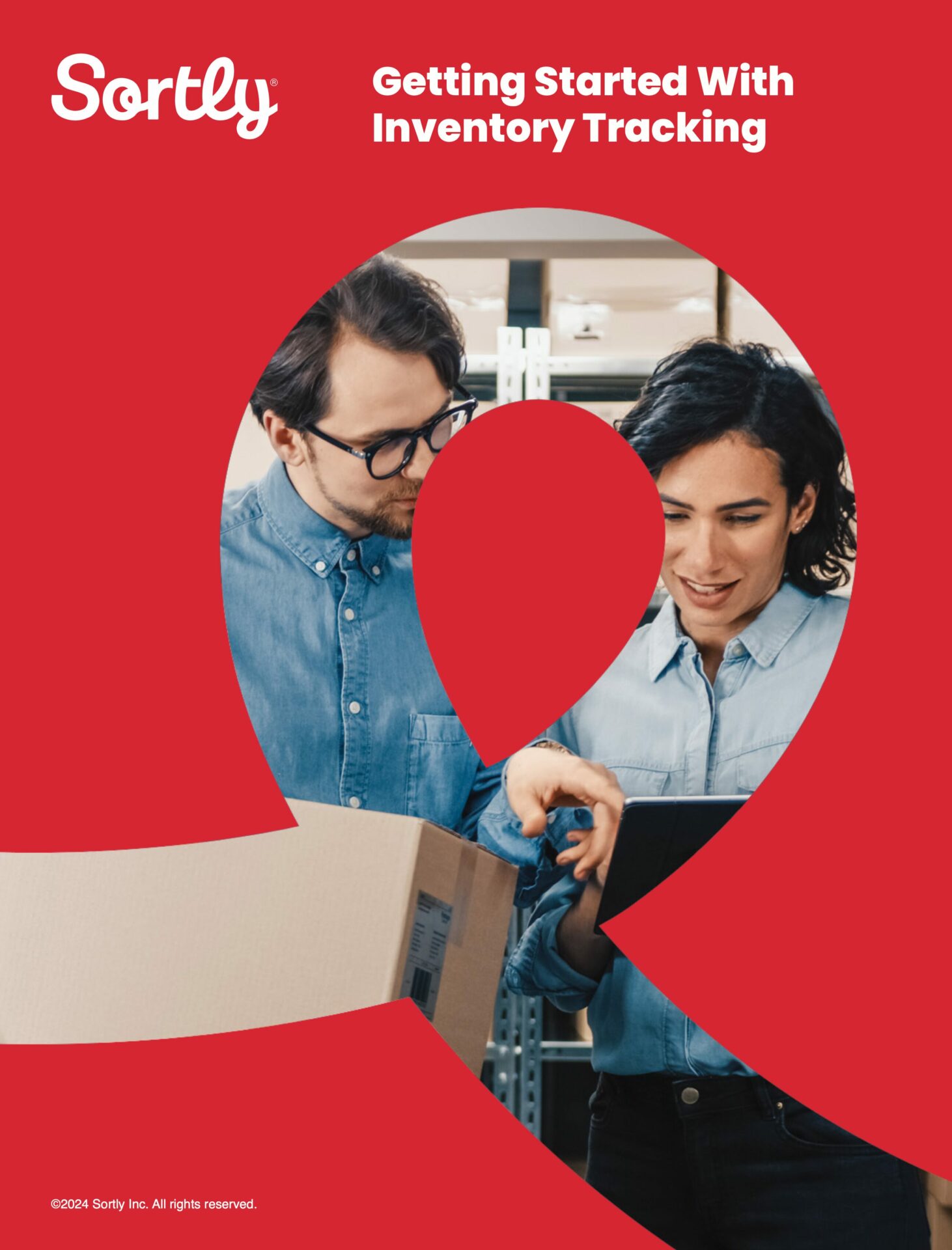Managing software assets is essential for organizations that want to optimize costs, automate compliance, and streamline IT operations, especially across multiple locations. With hybrid and multi-cloud environments becoming the norm in 2026 workplaces, many companies are turning to software asset management tools that provide complete visibility into software licenses and SaaS apps.
In this guide, we’ll zoom in on five leading software asset management (SAM) tools for 2026.
Top 5 software asset management tools
The SAM market includes enterprise-grade platforms and user-friendly solutions that balance functionality with flexibility. Each tool offers different strengths depending on industry, scale, and IT environments. As always, the best management tool for your business is the one that your team will actually use day after day and month after month.
1. Sortly
Sortly is an inventory management platform that allows businesses to track software assets, physical assets like equipment and tools, and virtually anything else that helps their business run. The advantage of using Sortly for managing software assets is that you can also track all of your business’s other assets, so every asset is tracked in the same easy, centralized system. With our customizable tracking, you can track software licenses, versions, and subscriptions of all the platforms your business uses. The best part? You can view or update from any device, any location, thanks to Sortly’s cloud-based app. Sortly reduces reliance on spreadsheets and ensures full visibility into all your assets.
Key features and benefits:
- Customizable fields to track both hardware and apps—and virtually anything else
- Minimum level settings and automated alerts for license expirations, renewals, and low stock thresholds
- Barcode and QR code scanning for quick updates across multiple locations
- Permission-based access for secure collaboration across IT teams
- Real-time cloud syncing that keeps data consistent across offices, warehouses, and job sites
Sortly is trusted by industries that value scalability and simplicity. Construction firms use it to track both heavy equipment and software usage, while IT teams appreciate the ability to manage hardware and SaaS management in one dashboard. The app has also earned top honors from leading software review sites, including Capterra, GetApp, and Software Advice.
Sortly shines when companies want a user-friendly system that can automate alerts, optimize license tracking, and unify both physical and software assets. For organizations already using Sortly for inventory management, extending it to software assets is a natural next step.
2. Flexera
Flexera is a leading SAM solution designed for complex enterprise environments. It is best suited for organizations with large software portfolios and hybrid infrastructures.
Key features and benefits:
- Advanced license compliance and optimization capabilities
- Deep integration with hybrid and multi-cloud ecosystems
- Detailed reporting and metrics that support procurement and vendor management
Flexera is frequently recognized by Gartner for its enterprise-grade functionality. It’s worth noting, however, that the price point and onboarding complexities may make it less accessible for smaller businesses and a better fit for larger organizations.
3. Amazon Web Services (AWS License Manager)
AWS License Manager is built for organizations running workloads in the AWS ecosystem. It simplifies license tracking in cloud-based environments.
- Key features and benefits:
- Centralized license position tracking across AWS workloads
- Automated compliance checks and audit readiness
- Integration with AWS cost savings and optimization tools
AWS is widely adopted by cloud-first IT operations teams. But keep in mind that because the primary focus is on AWS, there is limited support for on-premises or hybrid software usage.
4. Asset Panda
Asset Panda offers a customizable platform for tracking IT and software assets. It appeals to organizations that want tailored workflows.
- Key features and benefits:
- Mobile-first interface with barcode scanning
- Configurable workflows for license agreements and entitlements
- Cloud-based reporting and dashboards for usage data
Asset Panda has been praised for customization and user-friendliness. As is common with highly customizable platforms, getting the full value of the platform requires an investment of time in the initial setup. This initial setup time is a factor businesses should weigh against the long-term benefits of a tailored asset tracking system.
5. Ivanti
Ivanti provides IT asset and service management solutions with strong compliance features. It is widely used in enterprise IT environments.
- Key features and benefits:
- Automated discovery of software applications and entitlements
- License reconciliation, audit readiness, and lifecycle management
- Integration with IT service management platforms like ServiceNow
Ivanti is recognized for combining SAM tools with ITSM (IT Service Management) functionality. For some teams, that’s a huge win. But, since it’s mostly enterprise-focused, the software may be too complex for smaller IT departments.
Essential capabilities of software asset management tools
When evaluating SAM tools, certain capabilities are non-negotiable. Without them, organizations risk overspending, non-compliance, and security risks—not to mention frustration, disorganization, and wasted time. Here are the most important features to consider:
1. Ease of use
A SAM tool should simplify operations rather than add complexity. For example, Sortly’s user-friendly interface makes it easy to allocate licenses and track software usage across teams.
2. License management and compliance automation
Automated compliance reduces audit risks and saves time. Sortly is GDPR and SOC II compliant, with customizable access settings to ensure secure license compliance. When searching for the best asset management software for your licenses and software, look for the compliance certifications you need.
3. Reporting and analytics functionality
Robust reporting helps identify unused software so your business can allocate it better—or even reduce the number of licenses held. There are plenty of opportunities to reduce spend, and the best SAM will identify them.
Flexera, for example, does this well, as does Sortly, whose dashboard and customizable reports provide clear data on asset availability.
4. Security and access control features
Permission-based access ensures only authorized stakeholders can manage or view assets.
Sortly’s role-based controls support secure collaboration while ensuring only the right people can edit or view certain data. Many other providers offer customizable access and control features, so ensure your top pick has the customizability you need.
5. Alerts
Automated alerts prevent lapses in software accessibility. Sortly offers date-based alerts, which can be set up to notify your team when renewals are due or when minimum thresholds are reached, allowing time to update billing information, renegotiate prices, and more.
6. Ability to track other types of assets
Most software asset management tools focus solely on software. Sortly’s advantage—for businesses that need it—is its ability to track both software and physical assets (and other inventory) on one platform. This reduces reliance on spreadsheets and allows your business to manage all its inventory and assets at scale.
This easy, comprehensive guide will help you:
Free Ebook: Getting Started With Inventory Tracking
Making SAM tools work across hybrid and multi-cloud environments
Many businesses aren’t just on-premises anymore. IT configurations need to work for cloud-based and hybrid setups too. SAM tools, as a result, must be able to handle every sort of configuration, especially because how and where employees work will likely continue to change.
The following considerations are key for all businesses, but especially those operating remotely, hybridly, or across multiple locations:
Tracking on-premises vs. cloud license usage
Enterprises need visibility across both environments. AWS License Manager excels in cloud-native tracking, while Sortly offers flexibility across asset lifecycle categories.
Ensuring consistent compliance across environments
Compliance automation is critical. Flexera and Ivanti provide enterprise-grade compliance features, while Sortly ensures customizable alerts and workflows.
Optimizing hybrid infrastructure costs
SAM tools help identify unused licenses and optimize software spend. Data and analytics are key here, with Sortly offering straightforward dashboards and customizable reports for cost-conscious IT teams.
Manage software assets with ease
Software asset management solutions are essential for cost savings, compliance, and operational efficiency. Whether you are managing SaaS apps, licensing agreements in a hybrid cloud, or tracking IT hardware assets alongside software, the right tools make all the difference.
Sortly stands out for its ease of use, affordability, and ability to combine software and physical asset tracking in one platform. For companies already using Sortly for inventory, extending it to software assets means fewer systems to manage, less risk of non-compliance, and more streamlined workflows.
Start your two-week free trial of Sortly today.




